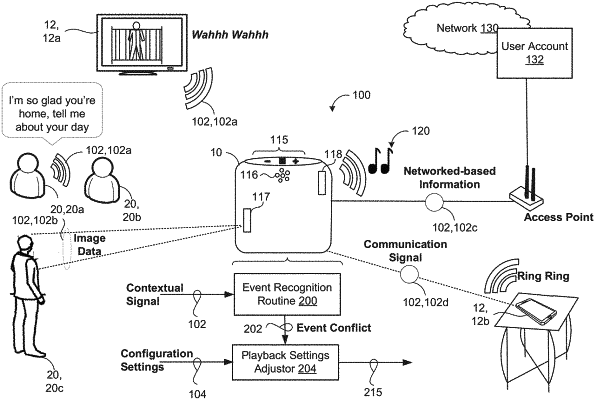| CPC H04N 21/458 (2013.01) [H04N 21/4396 (2013.01); H04N 21/44218 (2013.01); H04N 21/4532 (2013.01); H04N 21/466 (2013.01); H04N 21/47202 (2013.01); H04N 21/47217 (2013.01)] | 20 Claims |

|
1. A method comprising:
receiving, at data processing hardware of an assistant-enabled device while the assistant-enabled device is playing back media content in an environment of the assistant-enabled device, a contextual signal representing the environment, the contextual signal comprising at least one of audio present in the environment detected by a microphone of the assistant-enabled device or image data representing an image of the environment captured by an image capture device of the assistant-enabled device;
executing, by the data processing hardware of the assistant-enabled device while the assistant-enabled device is playing back the media content, an event recognition routine to determine whether the received contextual signal is indicative of an event present in the environment that conflicts with the playback of the media content in the environment from the assistant-enabled device; and
in response to the event recognition routine determining that the received contextual signal is indicative of the event present in the environment that conflicts with the playback of the media content in the environment, automatically adjusting, by the data processing hardware of the assistant-enabled device, content playback settings of the assistant-enabled device while continuing to receive the contextual signal that is indicative of the event present in the environment that conflicts with the playback of the media content in the environment from the assistant-enabled device,
wherein executing the event recognition routine comprises executing a neural network-based classification model configured to receive the contextual signal as input and generate, as output, a classification result indicating whether the received contextual signal is indicative of the event present in the environment that conflicts with the playback of the media content in the environment from the assistant-enabled device.
|